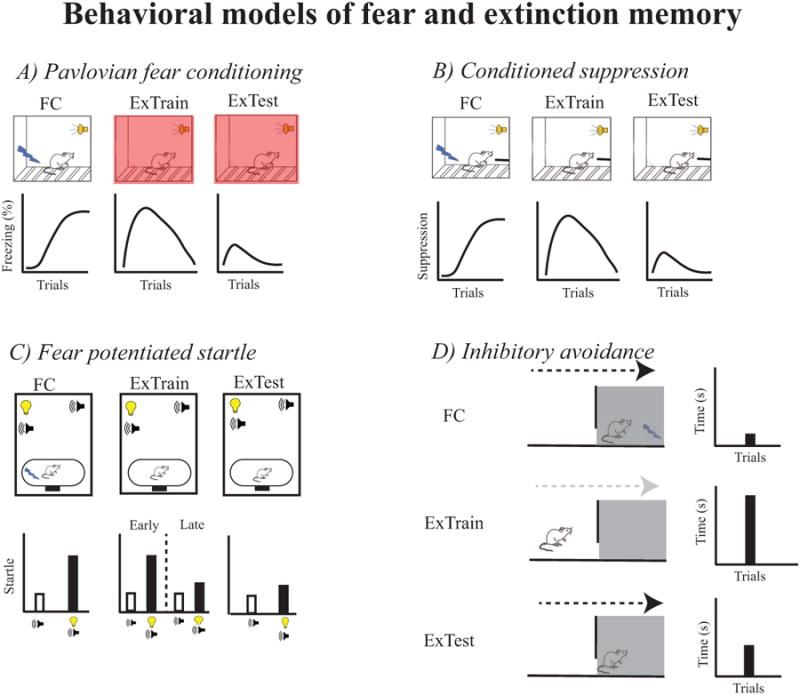Figure 1.

Behavioral paradigms used to examine emotional memory (fear and extinction) in neuroscience experiments. Cartoons illustrate the paradigm and graphs adjacent to the cartoons illustrate the change in fear behavior during fear conditioning (FC), extinction training (ExTrain), and extinction testing (ExTest). A) Pavlovian fear conditioning. Freezing is used as the measure of fear in this paradigm. Often the conditioning and extinction contexts are different in this paradigm (represented by change in color), which can allow for separate measurement of cued and contextual fear and extinction memory. B) Conditioned fear suppression. In this paradigm, changes in operant performance are used as the measure of fear behavior, but a context shift is not typically used. C) Fear potentiated startle. This paradigm involves presentation of a white noise burst to elicit a startle reflex, which is typically measured by an accelerometer that transduces movement into an electrical signal. During conditioning and in the presence of the conditioned stimulus (CS) the startle reflex is enhanced. D) Inhibitory avoidance. This paradigm involves placing the animal in a light compartment that is connected to a dark compartment. Upon entering the dark compartment the animal then receives a footshock. Avoidance of the dark compartment after conditioning is the measure of fear behavior.
